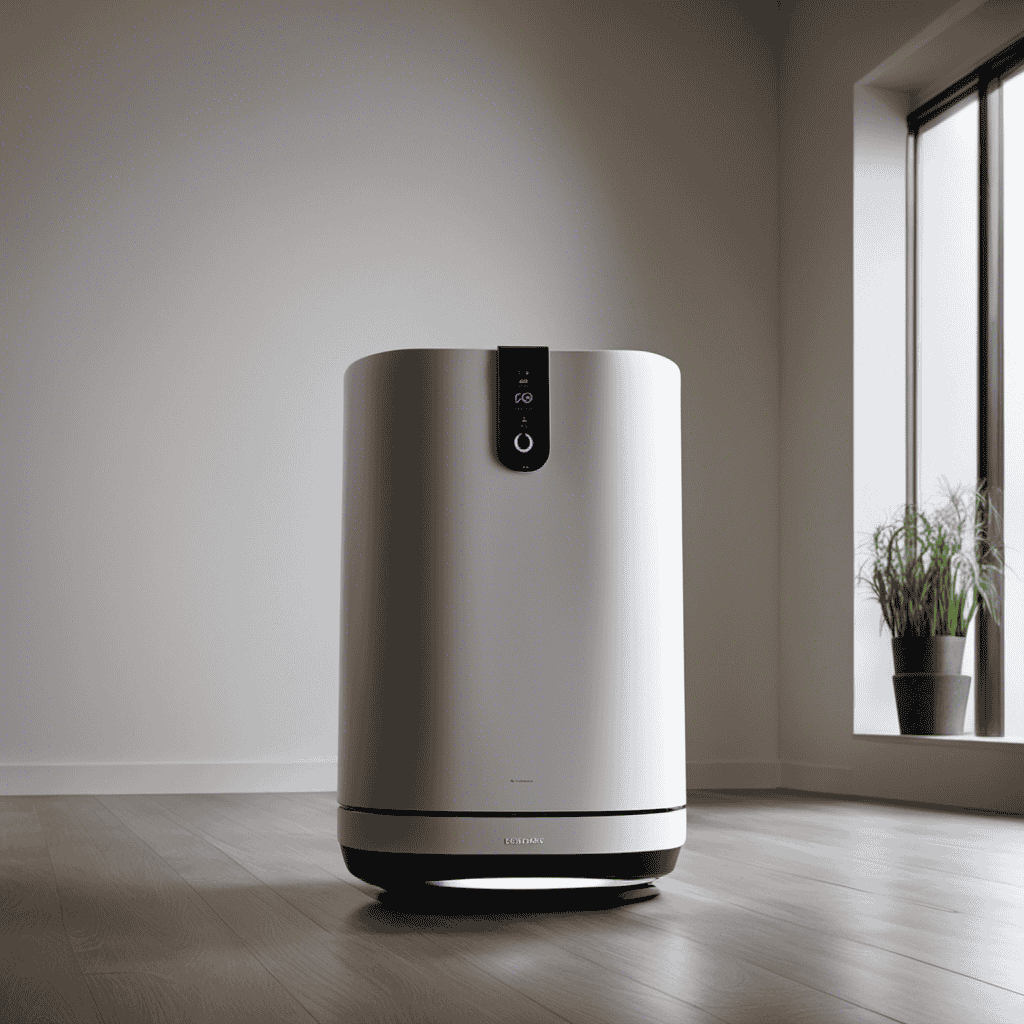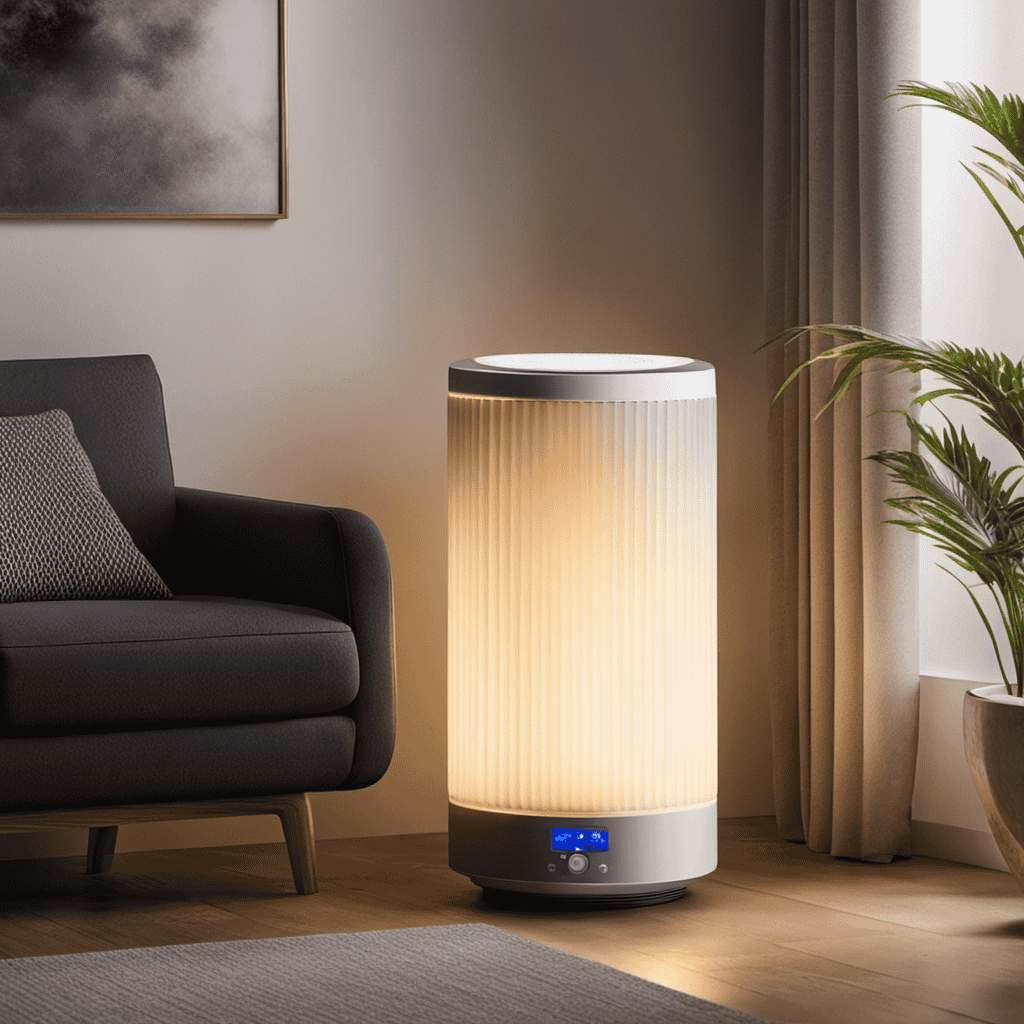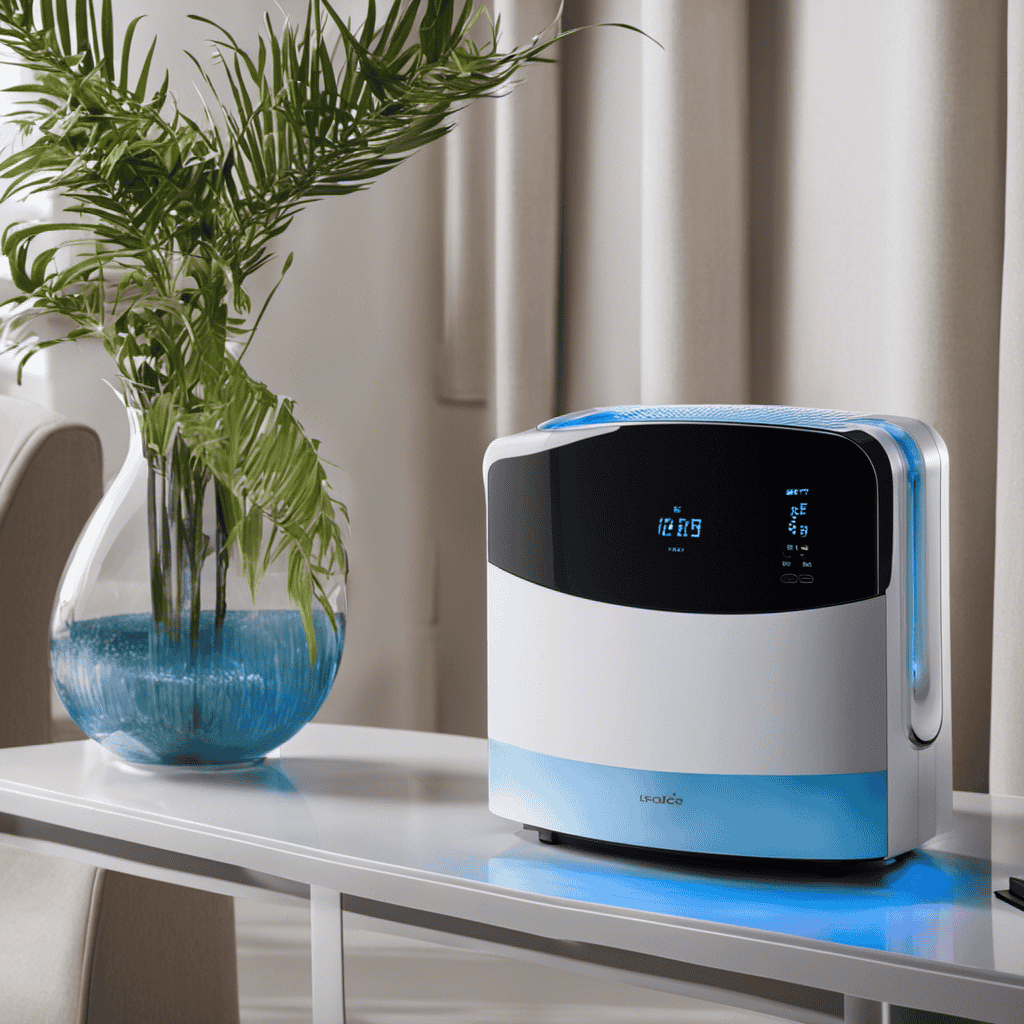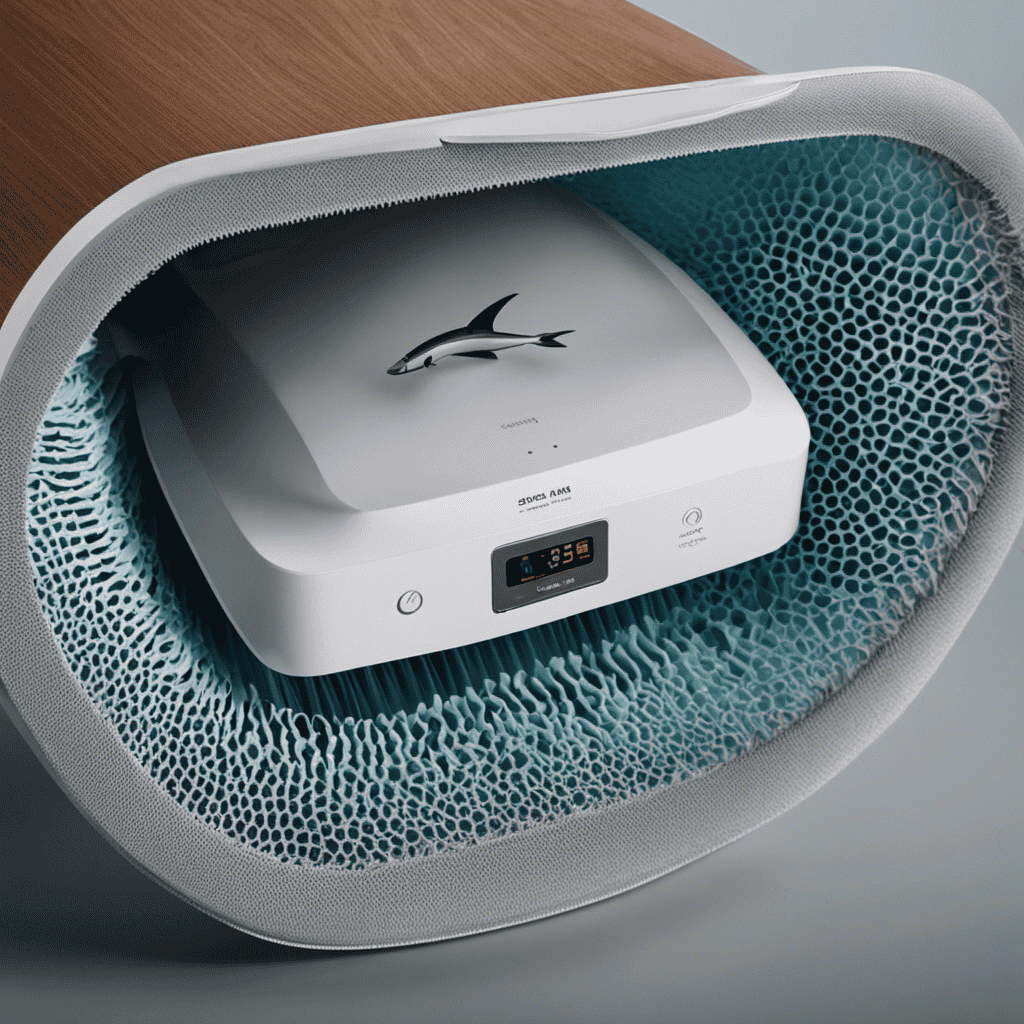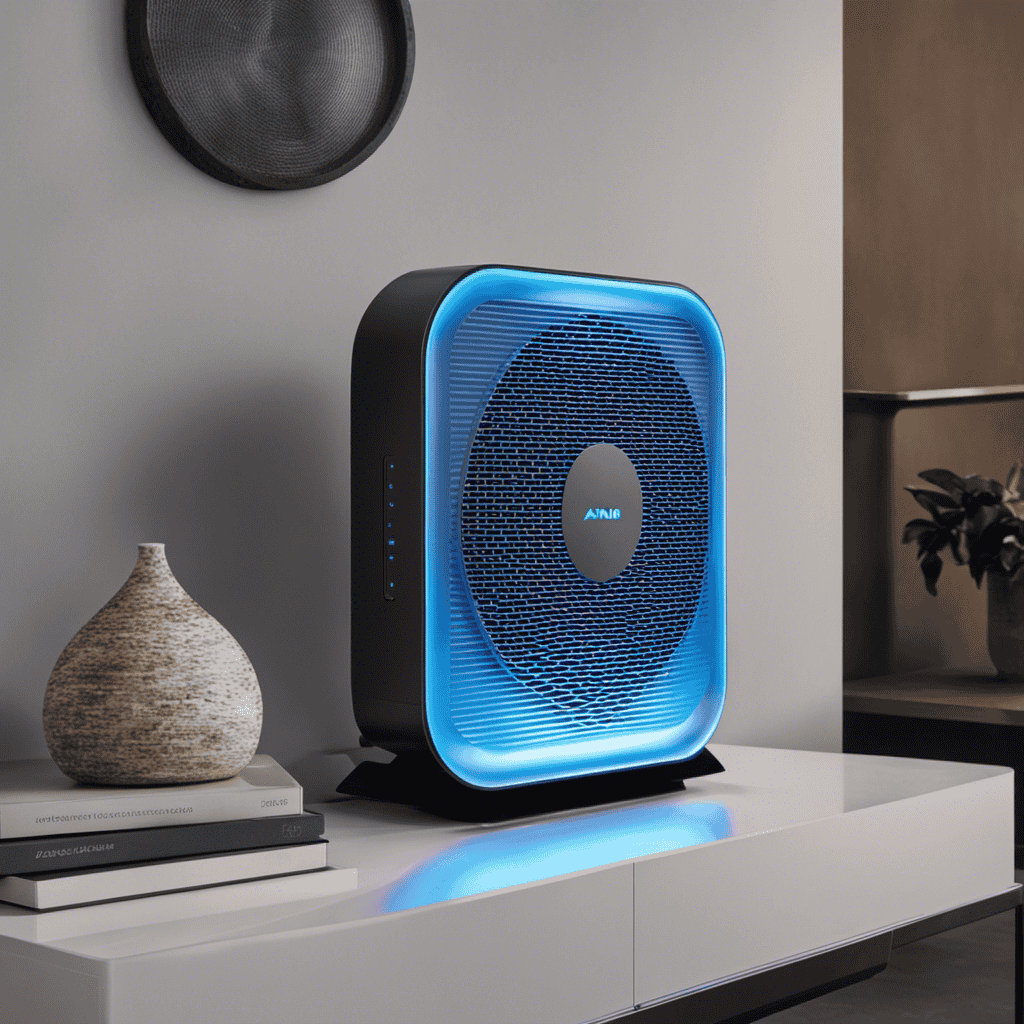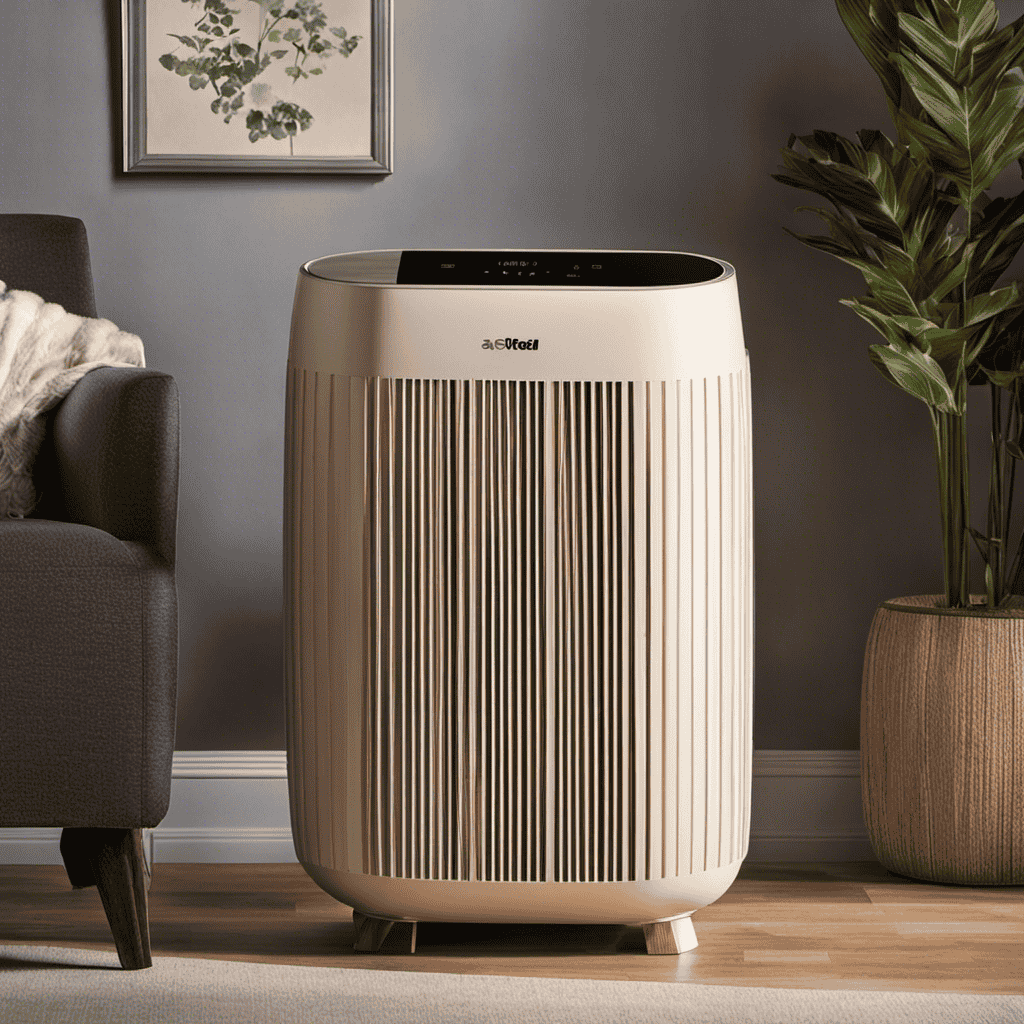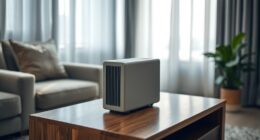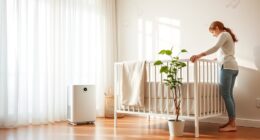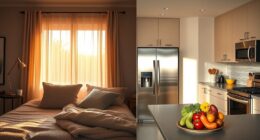As a dedicated user of air purifiers, I have frequently thought about the frustrating issue of the loud noise coming from my favorite device.
Why is my air purifier so loud? In this article, we will delve into the possible causes of this auditory annoyance and explore the impact of different factors on noise levels.
From fan motor issues to filter problems, we’ll uncover the solutions and importance of regular maintenance.
Join me on this informative journey as we seek to find the perfect balance between noise and performance.
Key Takeaways
- Regular maintenance is crucial for optimal performance and to reduce noise levels of air purifiers.
- Neglecting maintenance can lead to reduced performance, increased noise levels, and potential health risks.
- Quieter fan blade designs, vibration dampening techniques, and soundproofing materials help to reduce noise in air purifiers.
- When comparing air purifier models, evaluating noise levels, dB ratings, and customer reviews can help in choosing a quieter option.
Possible Causes of Excessive Noise
One possible cause of the excessive noise from your air purifier could be a dirty or clogged fan. The fan plays a crucial role in the air purifying process, but over time, dust, dirt, and debris can accumulate on the fan blades, causing it to work harder and produce more noise.
This underlying cause can significantly impact the sleep quality of individuals, as excessive noise can disrupt their sleep patterns and make it difficult to fall asleep or stay asleep throughout the night.
It is important to regularly clean and maintain the fan of your air purifier to ensure optimal performance and reduce noise levels. By doing so, you can improve the overall air quality in your home and promote better sleep.
Understanding Air Purifier Noise Levels
Understanding air purifier noise levels can help you determine if the loudness is within an acceptable range. Evaluating noise levels is crucial in creating a comfortable and quiet environment. Here are some key points to consider:
-
Decibel (dB) Measurement: Air purifier noise levels are typically measured in decibels (dB). It is important to check the manufacturer’s specifications for the dB level produced by the unit.
-
Comparison to Background Noise: Compare the air purifier noise level to the background noise in your space. A difference of 10 dB or more can make a noticeable impact on your overall comfort.
-
Noise Reduction Techniques: Look for air purifiers with noise reduction features such as soundproofing, insulated motor housings, or variable speed settings. These techniques can help minimize noise and provide a quieter experience.
Fan Motor Issues and Solutions
When the fan motor malfunctions, it’s important to troubleshoot and find a solution to ensure a quiet air purifier experience.
If your air purifier is making excessive noise, it could be due to issues with the fan motor. To troubleshoot fan motor problems, start by checking if there are any obstructions blocking the fan blades. Dust, debris, or a loose component could all cause noise.
If everything seems clear, the next step is to inspect the fan motor for any signs of wear or damage. If you notice any issues, it may be necessary to replace the fan motor. Additionally, regular maintenance, such as lubricating the motor, can help reduce noise.
By addressing fan motor problems, you can create a more peaceful environment in your home.
Now, let’s explore the impact of filter problems on noise.
Filter Problems and Their Impact on Noise
To reduce noise in your air purifier, check the filter for any clogs or damage that may be affecting its performance. Proper air filter maintenance is crucial to ensure the efficiency and effectiveness of your air purifier.
Here are some common filter problems that can contribute to increased noise levels:
- Clogged filter: A dirty or clogged filter restricts airflow and forces the fan to work harder, resulting in louder operation.
- Damaged filter: Any tears, holes, or deformities in the filter can disrupt the airflow and cause noise.
Regular maintenance of the air filter is essential to prevent dust accumulation, which can have a significant impact on the noise levels of your air purifier. Dust buildup not only affects the filter’s ability to trap particles effectively but also increases resistance to airflow, leading to noisier operation.
By keeping your filter clean and replacing it regularly, you can ensure a quieter and more efficient air purifier.
Now, let’s explore the importance of regular maintenance for your air purifier.
Importance of Regular Maintenance
Regular maintenance is crucial in preventing noise issues in air purifiers. Implementing noise prevention measures, such as cleaning or replacing filters regularly, can significantly reduce the noise produced by the purifier.
In addition to noise reduction, proper upkeep ensures the overall efficiency and longevity of the device, making it a worthwhile investment for long-term use.
Noise Prevention Measures
One way to reduce the noise of your air purifier is by adjusting the fan speed. By lowering the fan speed, you can decrease the amount of air being circulated, resulting in a quieter operation.
However, it is important to note that reducing the fan speed may also reduce the efficiency of the air purifier in capturing airborne particles. To strike a balance between noise reduction and effectiveness, consider the following tips for minimizing noise:
- Place the air purifier on a stable surface to minimize vibrations.
- Clean or replace the air filters regularly to prevent clogging and excessive noise.
- Keep the air purifier away from walls or furniture to allow for proper air flow.
Implementing these simple strategies can help in achieving a quieter and more enjoyable environment while still enjoying the benefits of clean air.
Benefits of Upkeep
If you neglect maintenance, you may experience decreased performance and increased noise levels with your air purifier. Regular upkeep is crucial to ensure optimal functioning and noise reduction.
The frequency of cleaning depends on various factors such as the environment, usage, and the manufacturer’s recommendations. Cleaning the air filters is essential as they trap dust, allergens, and pollutants, which can accumulate over time and affect the efficiency of the purifier.
Regular filter replacement is equally important as it ensures clean and fresh air. Clogged filters not only reduce the air purifier’s effectiveness but also contribute to increased noise levels.
By regularly cleaning and replacing filters, you can maintain the performance of your air purifier and prevent excessive noise.
Now, let’s discuss the recommended frequency of maintenance to keep your air purifier running smoothly.
Frequency of Maintenance
To ensure optimal performance and minimize noise, you should clean and replace the air filters in your purifier as recommended by the manufacturer. Regular maintenance is crucial to keep your air purifier running smoothly and efficiently. Neglecting maintenance can have a significant impact on the performance and lifespan of your purifier.
Here are some key aspects to consider regarding air purifier maintenance frequency:
-
Type of air purifier: Different types of purifiers may require different maintenance schedules. HEPA filters, for example, usually need to be replaced every 6-12 months, while carbon filters may last longer.
-
Environmental conditions: If you live in an area with high levels of pollutants or allergens, you may need to clean or replace your filters more frequently.
-
Usage: The more you use your air purifier, the more frequently you will need to perform maintenance.
Neglecting air purifier maintenance can lead to reduced performance, increased noise levels, and even potential health risks. By following the manufacturer’s recommendations and staying on top of regular maintenance, you can ensure your air purifier operates effectively and quietly.
Airflow Restrictions and Noise
Have you checked if there are any blockages or obstructions in the air vents that could be causing your air purifier to be so loud?
Airflow restrictions can significantly contribute to the noise produced by an air purifier. Blockages or obstructions in the air vents can disrupt the smooth flow of air, resulting in increased turbulence and noise.
To reduce the noise caused by airflow restrictions, it is essential to regularly clean and maintain the air vents. Additionally, you can consider using noise reduction techniques such as placing the air purifier on a soft surface to absorb vibrations or using soundproofing materials around the unit.
Noise from an air purifier can have a significant impact on sleep quality, as excessive noise can disrupt sleep patterns and lead to poor sleep quality. So, addressing airflow restrictions and reducing noise is crucial for a quieter and more peaceful sleep environment.
Noise Reduction Techniques for Air Purifiers
When it comes to reducing noise in air purifiers, two key areas to focus on are the fan blade design and the casing materials.
Quieter fan blade designs can significantly reduce the noise generated by the air purifier. By using advanced aerodynamics and materials, the fan blades can operate more efficiently and quietly.
Additionally, incorporating soundproofing materials in the casing can further dampen the noise produced by the air purifier, ensuring a quieter and more comfortable environment.
Quieter Fan Blade Design
The fan blade design in newer models is quieter than older ones. This is achieved through the use of silent technology and various noise reduction methods.
-
Aerodynamic Design: The fan blades are designed to minimize air turbulence, reducing noise generated by the airflow. This is achieved by carefully shaping and angling the blades to optimize air movement while minimizing noise.
-
Vibration Dampening: The fan blades are mounted on rubber or silicone grommets to absorb vibrations, preventing them from being transmitted to the housing or other components. This reduces noise caused by mechanical vibrations.
-
Blade Material: The materials used for the fan blades are carefully selected to minimize noise generation. High-quality, lightweight materials such as composite plastics or aluminum alloys are commonly used to reduce the overall noise level.
Soundproofing Materials for Casing
You can use soundproofing materials to reduce the noise generated by your air purifier casing. These materials are designed to absorb and block sound waves, minimizing the noise that escapes from the unit.
There are several types of soundproofing materials available, each with their own unique properties and benefits.
One effective soundproofing material is mass loaded vinyl (MLV), which is a dense and flexible material that can be applied to the interior walls of the casing. MLV acts as a barrier, preventing sound waves from passing through.
Another option is acoustic foam, which is designed to absorb sound energy and reduce reverberation. Acoustic foam can be placed inside the casing to dampen noise.
In addition to using soundproofing materials, there are other noise reduction techniques that can be employed. These include isolating the air purifier from the surrounding environment by using rubber or foam pads to absorb vibrations, and ensuring that the casing is properly sealed to prevent air leaks that can contribute to noise.
Evaluating Noise Levels in Different Air Purifier Models
It’s important to consider noise levels when comparing different air purifier models. Evaluating the noise levels of air purifiers can help you choose a model that fits your needs and preferences.
Here are some key factors to consider when evaluating noise levels:
-
Fan Speed: The noise level of an air purifier can vary depending on the fan speed. Higher fan speeds usually produce more noise, while lower speeds are generally quieter.
-
Noise Reduction Techniques: Some air purifier models utilize noise reduction techniques, such as insulated casings or soundproofing materials, to minimize noise levels.
-
dB Rating: Look for air purifiers that provide dB ratings for different fan speeds. A lower dB rating indicates a quieter operation.
Comparing Noise Levels of Different Brands
When it comes to choosing an air purifier, noise level is an important factor to consider. In this discussion, I will be comparing the noise levels of different brands to help you find the quietest air purifier.
Brand Noise Comparisons
If you’re looking for a quieter air purifier, comparing noise levels between different brands can help you make a more informed decision. When considering brand reputation, it’s important to take into account the experiences shared by customers in their reviews.
Here are three factors to consider when comparing noise levels of different air purifier brands:
-
Motor Power: A more powerful motor may result in higher noise levels, so check if the brand offers different power options.
-
Fan Design: Brands that prioritize noise reduction may have specially designed fans that operate with minimal sound.
-
Noise Reduction Technology: Look for brands that incorporate advanced noise reduction technology, such as soundproof insulation or vibration dampening, to ensure a quieter operation.
By considering these factors and prioritizing brands with positive customer reviews about noise levels, you can find an air purifier that meets your needs for a quiet environment.
Now, let’s move on to the next section to explore the quietest air purifiers available in the market.
Quietest Air Purifiers
After comparing the noise levels of different air purifier brands, it’s time to explore the quietest air purifiers available on the market.
When it comes to reducing noise, manufacturers employ various techniques to ensure a peaceful environment. One common technique is the use of advanced soundproofing materials in the design of the unit. These materials absorb and dampen sound waves, minimizing noise output.
Additionally, some air purifiers feature specially designed fan blades and motors that produce less noise during operation. Noise reduction is also achieved through the optimization of airflow paths, which reduces turbulence and consequently lowers noise levels.
By incorporating these noise reduction techniques, manufacturers have developed air purifiers that provide efficient air cleaning while operating quietly, allowing you to enjoy fresh and clean air without disturbance.
Now, let’s move on to the next section to explore the balance between noise and performance in air purifiers.
Noise Vs. Performance: Finding the Right Balance
Finding the right balance between noise and performance is important when choosing an air purifier. While we want a device that effectively cleans the air, we also don’t want it to disrupt our daily activities with excessive noise.
Here are some key factors to consider when looking for an air purifier that minimizes noise pollution:
- Noise reduction technology: Look for air purifiers that use advanced noise reduction technology, such as sound-dampening materials and insulated housing, to minimize operational noise.
- Fan speed settings: Opt for air purifiers that offer multiple fan speed settings. This allows you to adjust the speed according to your needs, balancing noise reduction with optimal performance.
- Sleep mode: Some air purifiers have a sleep mode, which operates at a quieter noise level while maintaining efficient air purification. This is especially useful for night-time use.
Troubleshooting Common Noise Issues
One common noise issue with air purifiers is that they may become louder over time. This can be frustrating, especially if you rely on your air purifier for a quiet and peaceful environment. The good news is that there are several troubleshooting techniques you can try to address this problem. First, check if the air purifier is properly cleaned and maintained. Dust and debris can accumulate over time and affect the fan’s performance, leading to increased noise. Additionally, evaluate noise reduction techniques such as placing the purifier on a rubber mat or using sound-absorbing materials. Lastly, consult the manufacturer’s instructions or contact customer support for further guidance. By evaluating noise reduction techniques and troubleshooting noise issues, you can restore the quiet operation of your air purifier.
| Troubleshooting Tips | |||
|---|---|---|---|
| Clean and maintain the air purifier regularly | Check the fan for dust accumulation | Place the purifier on a rubber mat | Use sound-absorbing materials |
Frequently Asked Questions
Can I Use My Air Purifier in a Bedroom or Will It Be Too Loud?
Yes, you can use an air purifier in a bedroom, but it might be too loud. Air purifier noise levels vary, so it’s important to choose one with a low noise level for bedroom appliances.
How Do I Know if the Noise Coming From My Air Purifier Is Normal or Excessive?
Rummaging through the depths of my mind, I pondered the question, "how do I know if the noise coming from my air purifier is normal or excessive?" In my quest for knowledge, I discovered tips for troubleshooting common air purifier noise issues and maintaining a quiet machine.
Are There Any Specific Air Purifier Models That Are Known for Being Quieter Than Others?
The quietest air purifier models can vary depending on the brand and specific model. When comparing noise levels between different air purifier models, it’s important to consider factors such as fan speed settings and the size of the room being purified.
Can I Reduce the Noise Level of My Air Purifier by Using It on a Lower Fan Speed Setting?
By using my air purifier on a lower fan speed setting, I can reduce the noise level. This is one of the noise reduction techniques that can help create a quieter environment.
Is There a Way to Fix a Noisy Air Purifier Without Having to Replace It?
Yes, there are troubleshooting steps to fix a noisy air purifier. Check if the filters are clean, place the purifier on a level surface, and ensure that no objects are blocking the air intake or output.
Conclusion
In conclusion, after thoroughly investigating the reasons behind the excessive noise of air purifiers, it is crucial to emphasize the significance of regular maintenance.
Like a gentle breeze through a serene meadow, a well-maintained air purifier should hum softly, providing clean and fresh air without disturbing your peace.
By addressing fan motor issues and filter problems promptly, you can restore the tranquil harmony in your living space.
Remember, finding the perfect balance between noise and performance is key to creating an atmosphere of serenity and purity.
